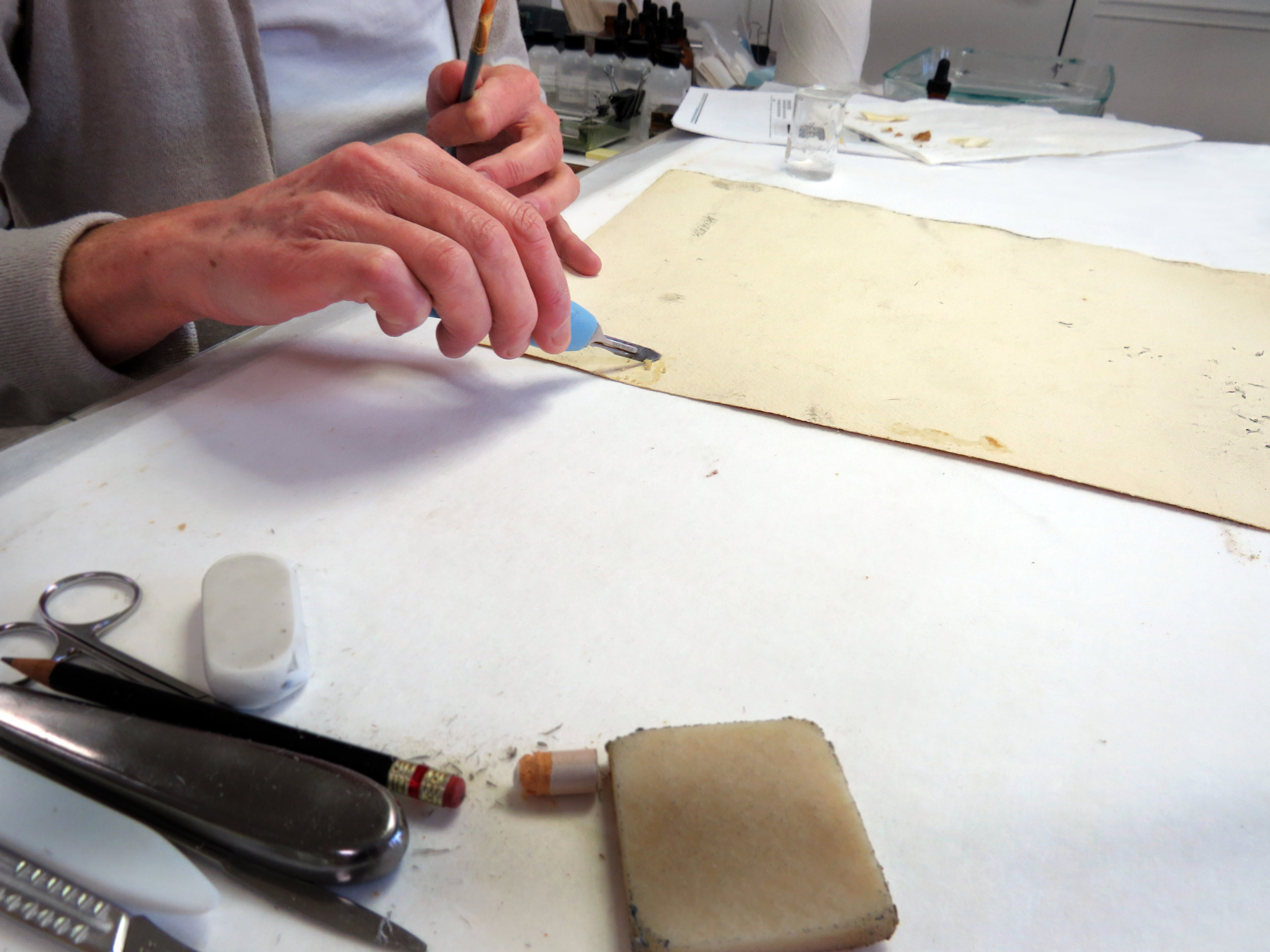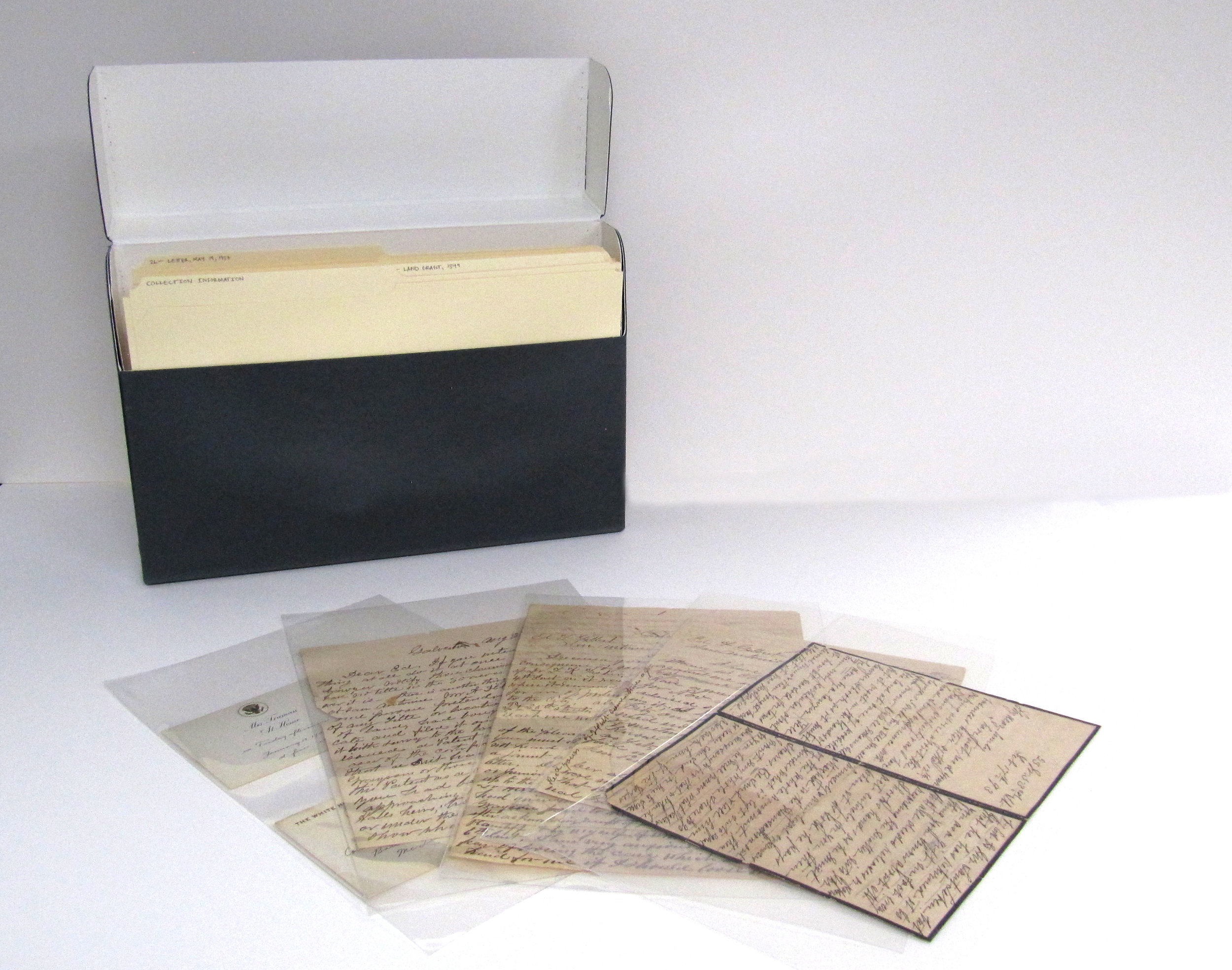Caring for Your Collection
Although works of art on paper such as prints, drawings, and watercolors are inherently fragile, they can be easily and effectively protected from damage and deterioration using these guidelines.
Handling
Works of art on paper should be touched as little as possible. Hands should be clean and dry before handling paper items, as the oils from fingers can cause staining on the paper. If possible, mat, frame, or store the works in a manner that permits viewing and transporting without direct handling.
Framing
Paper materials are damaged by prolonged contact with acidic surroundings. Mats, folders, and mounting adhesives must be chemically stable, non-staining, and permanent by reversible. It is important to use archival-quality materials. A common sign of poor mat board is browning of the cut edge of the window opening. If you are unsure of how to identify the material in your framed artwork, consult a paper conservator.
Archival framing standards:
Use a mat window and backboard made of 100% ragboard or lignin-free, alkaline-buffered matboard.
Attach artwork to the mat or mount by hinging it with high-quality archival tissue and a permanent, nonstaining, reversible adhesive. Homemade starch paste is the choice of conservators. Avoid commercial tapes, including those advertised as archival.
Use protective glazing, either glass or Plexiglas. The artwork must not be in direct contact with the glazing material. Ultraviolet filtering products are recommended to protect against UV light. Note that acrylic carries a static charge and must not be used with pastels, charcoal, or other powdery or flaking medium.
An additional protective layer or sturdy, lignin-free board should be used in the back of the frame. The frame should be well-sealed to discourage any entry of air or insects.
Storage
To prolong the life of your unframed paper items, they should be stored individually in acid-free alkaline folders, Mylar, or alkaline mats. Alkaline storage material provides a desirable neutralizing affect on acidity.
Please see here for our list of suggested vendors for archival storage materials.
Storage recommendations:
It is best to store paper items flat, rather than folding and unfolding, which can lead to creases and tears.
To protect the edges of items, folders should be larger than their contents.
Mylar has the benefit of being clear and can also provide support, but is not alkaline. Mylar can have an electrostatic charge, which damages friable media such as unfixed pastel and charcoal, heavily applied pencil, and flaking media.
Oversized items are best kept in flat file drawers. These files should be made of metal rather than wood because of the acidic gasses emitted by wood.
When storing highly acidic materials, such as newspaper clippings or telegrams, the items should be isolated to avoid acid migration.
Light
Light causes fading of certain media, especially watercolor, pastels, and many drawing inks. It can cause paper to bleach, become yellow, darken, and can severely embrittle the cellulose fibers of the sheet. Light damage is cumulative and irreversible.
Optimal display conditions are those with low light levels and no daylight exposure. Light sources containing ultraviolet (UV) rays are especially harmful. UV is found in all sunlight and in the emissions of certain artificial lights, such as some fluorescent and metal halogen lamps.
Special filters are available to screen out UV rays. Inexpensive plastic sleeves which filter UV rays can be placed on fluorescent tubes. Windows or frames can be covered with stick-on UV-absorbing films or rigid sheets of UV-filtering plastic. Because all light is damaging to art, conservators recommend that no work on paper be permanently displayed. In some cases, a high-quality photocopy or reproduction can be a good substitute for a light-sensitive original.
Pollution, Dust, and Pests
Dust and soot will soil delicate, porous paper surfaces and are difficult to remove safely. Pollutants, such as ozone and fumes from photocopy machines, car exhausts, and heating systems can cause damage to paper. Alkaline storage materials may help provide a buffer to these pollutants. Paper materials should be protected from dust and dirt using the storage systems mentioned above.
Monitor for evidence of rodents and insects. Silverfish, book lice, and book worms can eat, soil, and damage paper; good housekeeping and preventative environmental conditions will help reduce the threat of these pests.
Temperature and Humidity
Store paper materials in a cool, dark, dry location. Ideal conditions are 35% relative humidity and below 72° F. Avoid light, heat, and dampness. Maintaining steady temperature and relative humidity is preferable over cyclical conditions. Climate fluctuations cause expansion and contraction, which can lead to structural damage in paper, weaken the attachment of media, and cause distortions such as rippling.
High humidity can lead to the development of foxing (small, brown, disfiguring spots in paper) or mold growth. Frames and storage enclosures may provide some degree of protection against daily fluctuations but will not protect paper from long-term or seasonal changes. Due to climate fluctuations, do not store works in basements or attics. Do not hand them in bathrooms or over heat sources.
For more information, see guidelines from the Library of Congress: www.loc.gov/preserv/care/paper.html


